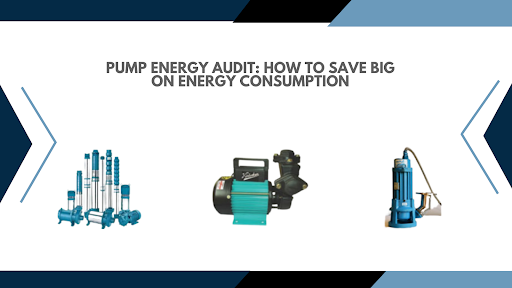
Energy prices are skyrocketing everywhere and if you are a pump owner, you would appreciate how important it is to ensure your pumps operate at optimum efficiency. Whether you’re concerned about your rising energy bills or running a sustainable business, pump energy audits help you meet your energy saving goals big time. We at VEMC are the leading water pump dealers based in Mumbai, and in this blog we tell you all you need to know about pump energy audit.
How Pump Auditing Is Done
A pump audit is a comprehensive and end-to-end assessment of a pump’s performance and energy efficiency and also an exercise to unearth any issues or areas for improvement. The major steps in pump auditing are
System design evaluation: Ensuring the design of the pump satisfies its unique needs.
- Performance analysis: Parameters like flow rate, pressure, power consumption, motor efficiency , etc., are measured.
- Assessing energy efficiency: Energy consumption patterns are analysed using tools like Variable Speed Drives (VSDs) and other control mechanisms.
- Maintenance and reliability review: Lubrication, alignment, vibration analysis and seal integrity are evaluated to test pump maintenance and reliability.
- System control and automation: Sequencing, control methods and technology are analysed to detect potential problems.
Factors That Can Waste Energy
One of the main aims of pump auditing is to ensure that your pumps do not consume too much energy. The main factors that are known to waste energy are:
- Inefficient pumps: If your pump is old, worn out and has outdated design or technology, it is highly likely that it is inefficient and consuming extra energy.
- Improper sizing: Make sure your pump size is suited for the task at hand. If the pumps are too big, it can lead to wastage of energy.
- Control issues: Insufficient control methods of the pumps is also one of the leading causes for wastage of energy. Try and test a number of different control methods like VSDs to make sure no energy is wasted.
Some Practical Tips For Optimising Pump Operation
- Avoid oversizing your pumps: While slight oversizing of pumps may be good for meeting future uncertainties, it is best to use a pump with capacity roughly equal to the demand of the task.
- Trimming the impeller: If your pump is oversized, it is a good practice to trim your impeller to reduce the pressure and flow produced.
- Using VFDs: Variable Frequency Drives help automate pump operations like flow and head to match the demand of the application.
- Parallel pumping system: Installing a second, smaller pump to match average demand of the application can be a good way to relieve the larger pump of a significant amount of burden.
- Limit pipework: Limiting the pipework in the system is a good way to reduce frictional loss and hence save energy. Make sure pipe diameter, length, layout , etc., are also given due consideration.
To know more about pump energy audits, feel free to call us on 022 43436655 or email us at marketing@vemc.co.in. We at VEMC are the leading water pump dealers based in Mumbai, with over 70 years of industry experience.

